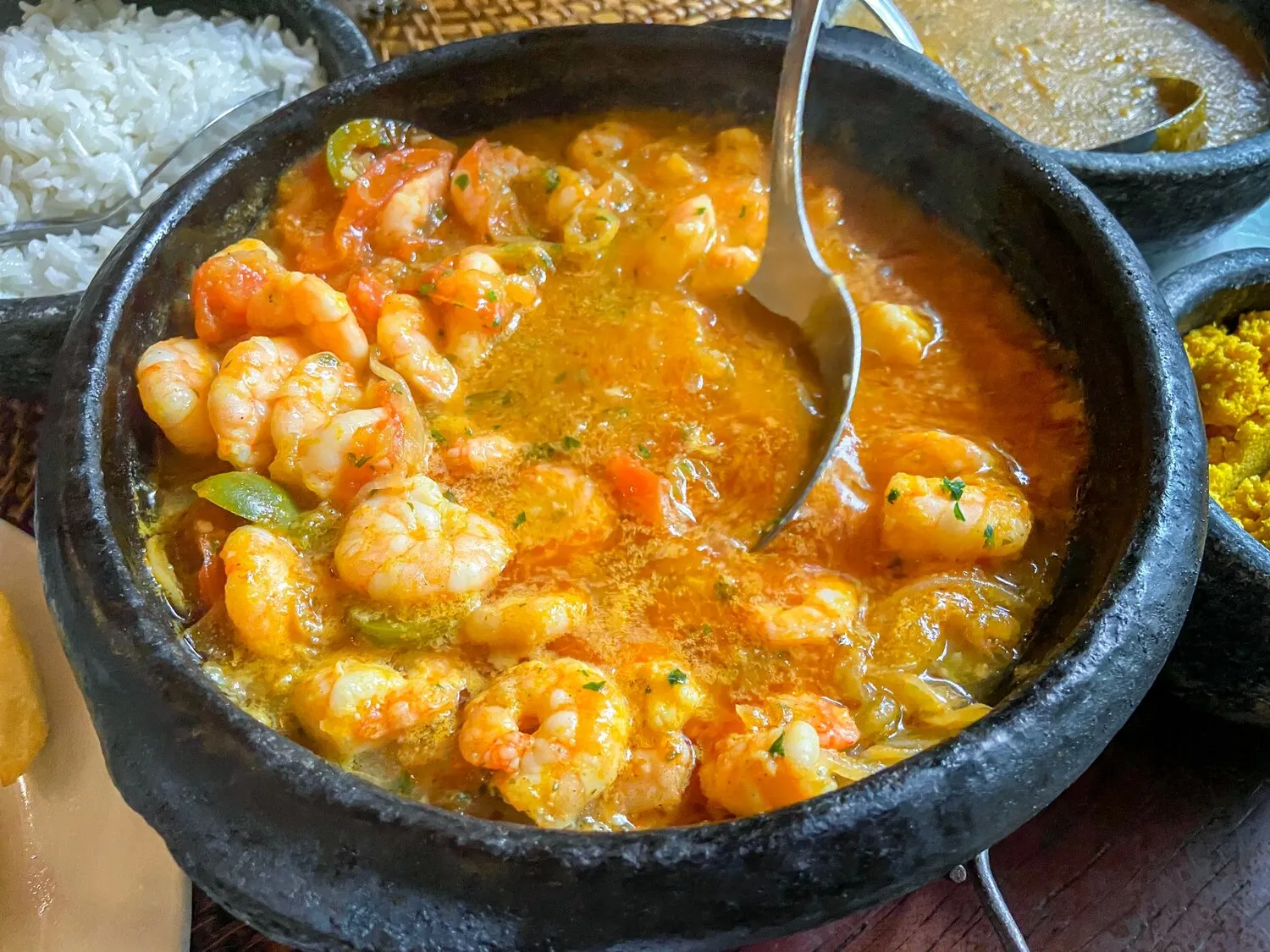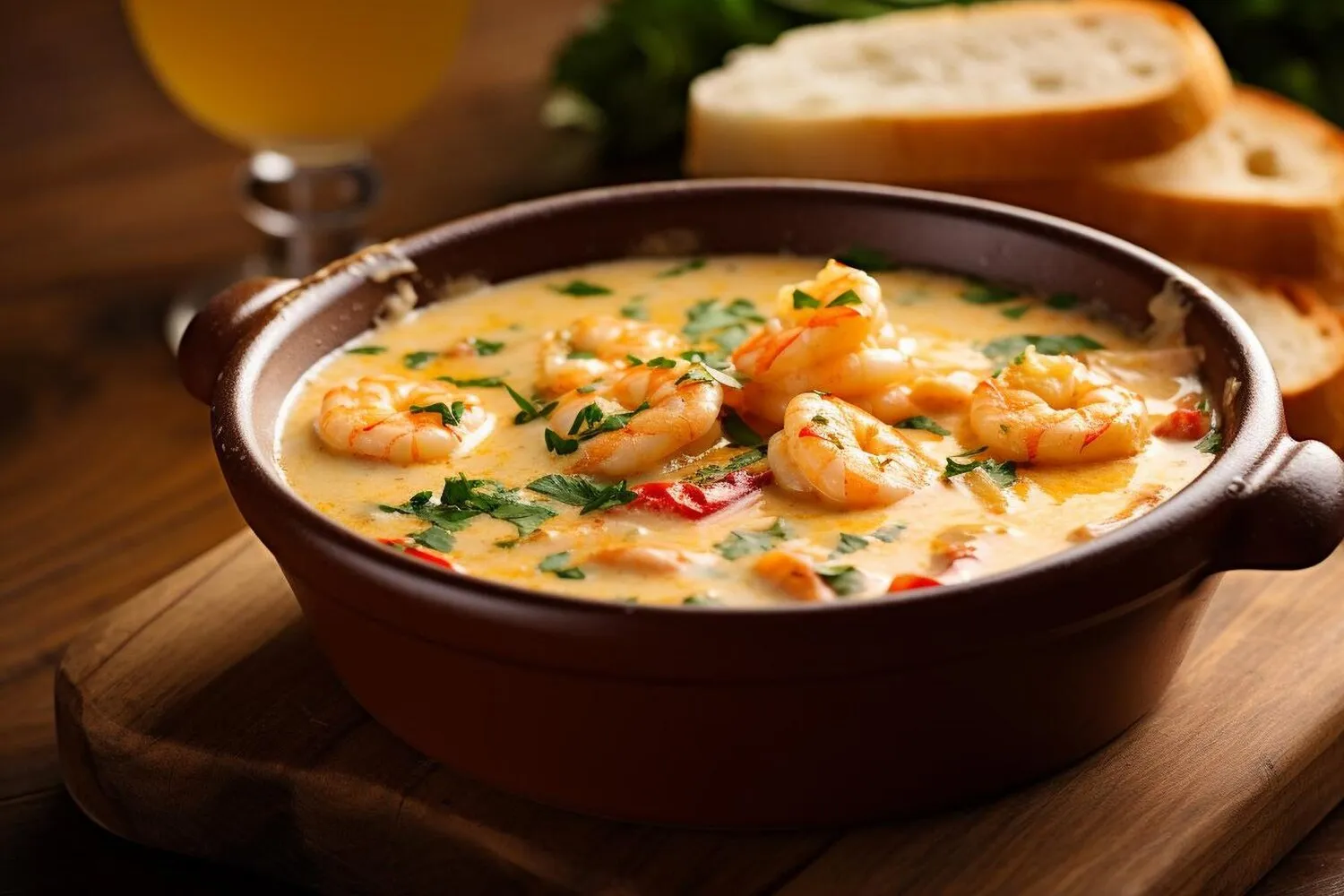
Peixada
Fish stew, typically made with local fish, tomatoes, onions, peppers, and cilantro.
Nutrition Facts
* The % Daily Value (DV) tells you how much a nutrient in a serving of food contributes to a daily diet. 2,000 calories a day is used for general nutrition advice.
Flor do Maracujá
Peixada's origins lie in the coastal regions of Brazil, where fishing has been a primary source of sustenance for centuries. It evolved from simple fisherman's stews, utilizing the freshest catch of the day and readily available local ingredients. Portuguese culinary influences also played a significant role, introducing techniques like slow cooking in flavorful broths.
Peixada is more than just a meal; it's a communal experience that celebrates the abundance of the sea and the warmth of Brazilian hospitality.
Coastal Tradition
Peixada is deeply rooted in the coastal communities of Brazil, where it represents a connection to the sea and a celebration of local ingredients.
Communal Dining
It is often prepared in large pots and shared amongst family and friends, fostering a sense of togetherness and celebration. It's common to gather around a table laden with the fragrant stew, rice, farofa (toasted cassava flour), and hot sauce.
Regional Variations
Different regions of Brazil have their own unique versions of Peixada, reflecting the local fish available and the preferred flavors of the area. For example, some regions might use coconut milk for a richer, creamier broth, while others may incorporate more piquant peppers.
Peixada is characterized by its savory and aromatic flavors, derived from a blend of fresh seafood, vibrant vegetables, and aromatic herbs.
The dominant flavor profile is seafood-forward, with the specific taste dependent on the types of fish used, often including firm white fish like grouper, snapper, or sea bass. The stew is enriched by the sweetness of ripe tomatoes, the pungency of onions and garlic, and the subtle heat of bell peppers (especially the milder sweet peppers). Cilantro provides a fresh, herbaceous counterpoint, while a touch of dendê oil (palm oil) in some variations adds a distinct, earthy richness and vibrant color. Lime juice is often squeezed on top just before serving to brighten the flavors.
Freshness is Key
Use the freshest fish available. The quality of the fish will significantly impact the flavor of the dish.
Layer the Flavors
Start by sautéing the onions, garlic, and peppers to build a flavorful base. Add the tomatoes and cook them down until they release their juices. This creates a rich and complex sauce.
Don't Overcook the Fish
Add the fish towards the end of the cooking process to prevent it from becoming dry and rubbery. Cook it just until it's opaque and flakes easily with a fork.
Adjust Seasoning
Taste and adjust the seasoning as you go. Peixada should be well-seasoned with salt, pepper, and any other spices you enjoy.
Explore additional Brazilian Seafood dishes and restaurants
Explore Brazilian SeafoodDiscover top dining spots and culinary experiences in Feira de Santana.
Explore Feira de SantanaLearn more about the food culture, restaurant scene, and culinary heritage of Brazil.
Explore Brazil
